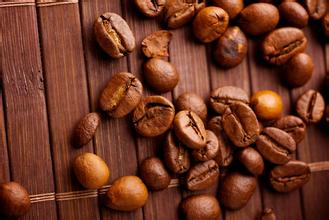Grinding scale Flavor description of Java Coffee beans introduction to the taste characteristics of the manor
Java coffee is represented by "soft" coffee, which tastes light and fragrant. The difference lies in the altitude and planting method of the producing area. Coffee is planted extensively in hilly red soil, while Java is cultivated intensively in mountainous black soil. Java coffee has a kind of bitter experience, clear astringency as life, and bitter taste is necessary in life, stop at the end of the tongue is a thorough recollection of the past. Looking back on the past will feel more bitter sweet and tender, more want to let the mood a little longer stop in the beginning of awakening consciousness. Suffering is pain, purity calms people, and incense becomes a spiritual victory.
Later, when ships replaced sailboats, people drank fresher coffee beans because of shorter delivery times. But people accustomed to old beans are not used to this fresh taste, so they desperately pursue old Java coffee, so that the Indonesian government and some businessmen deliberately store fresh beans in warehouses for one to two years before selling them to consumers. In fact, the acidity of aged Java beans is reduced to nearly zero compared to fresh beans, while the aroma is more intense. Because of the long storage time, the cost increases a lot, and the quantity is limited, so aged Java has always been a hot commodity in the coffee market. In the 1880s, some unscrupulous traders deliberately tampered with fresh Guatemala or Venezuela beans and sold them at high prices to imitate old Java. It is intolerable that the profiteers dye the coffee beans to make them look more like aged java, but there is no doubt that the dyeing chemicals are poisonous.
Java produces only a small number of arabica beans, most of which are Romstar beans imported from Africa after the rust disaster. This coffee has a strong bitter taste after roasting, but the aroma is extremely light. Although the acidity is low and the taste is relatively delicate, it is rarely used for direct drinking. It is often used to blend coffee or to make instant coffee.
Pests and diseases are a terrible thing. They have reduced Brazil's coffee production greatly and repeatedly dominated the international coffee market. They have also caused Sri Lanka, which once planted coffee trees everywhere, to cut down coffee trees and plant coffee all over again. It also makes Java, which is rich in high-quality Arabica coffee, change to Romstar coffee for fear of pest infestation. Arabica Java coffee, which is regarded as a treasure by people, is far away from people's sight. People's infinite favor and pursuit of Java coffee in those years have also been lost since then.

Important Notice :
前街咖啡 FrontStreet Coffee has moved to new addredd:
FrontStreet Coffee Address: 315,Donghua East Road,GuangZhou
Tel:020 38364473
- Prev

Description of varieties, Grinding scale and Flavor of Costa Rican Coffee beans introduction to manors in producing areas
Costa Rican coffee is full of Arabica beans, washed with water, its style is bright, fragrant, clear as wind chimes swaying in the breeze, mild acidity and sweetness. Because of the sweetness, even if the coffee gets cold, it tastes very good, which is a major feature of Costa Rican coffee. Therefore, it is recommended that when you taste Costa Rican coffee, only a small amount should be added.
- Next

Introduction to the varieties of processing manor in the area of grinding scale of coffee beans in Guatemala
From 1871 to 1944, the country began to devote itself to economic modernization. At the same time, the United Fruit Company, which is dominated by the United States, has also begun to buy large coffee and banana estates in Guatemala and intervene in Guatemalan politics. After the revolution of October 1944, the former dictator was overthrown, Guatemala practised democracy and freedom of expression, and there were few places in the world that could provide products like those produced in Guatemala.
Related
- Detailed explanation of Jadeite planting Land in Panamanian Jadeite Manor introduction to the grading system of Jadeite competitive bidding, Red bid, Green bid and Rose Summer
- Story of Coffee planting in Brenka region of Costa Rica Stonehenge Manor anaerobic heavy honey treatment of flavor mouth
- What's on the barrel of Blue Mountain Coffee beans?
- Can American coffee also pull flowers? How to use hot American style to pull out a good-looking pattern?
- Can you make a cold extract with coffee beans? What is the right proportion for cold-extracted coffee formula?
- Indonesian PWN Gold Mandrine Coffee Origin Features Flavor How to Chong? Mandolin coffee is American.
- A brief introduction to the flavor characteristics of Brazilian yellow bourbon coffee beans
- What is the effect of different water quality on the flavor of cold-extracted coffee? What kind of water is best for brewing coffee?
- Why do you think of Rose Summer whenever you mention Panamanian coffee?
- Introduction to the characteristics of authentic blue mountain coffee bean producing areas? What is the CIB Coffee Authority in Jamaica?

